Study on the Mechanism of Elastic Instability Caused by Natural Growth in Orthotropic Material
Abstract
:1. Introduction
2. Finite Element Model
2.1. Geometric Model of Leaf Growth
2.2. Constitutive Relation
2.3. Model Validation
3. Results and Discussion
3.1. Effect of Principal Shear Modulus on Critical Instability Conditions
3.2. Effect of Principal Shear Modulus and Off-Axis Angle on the Post-Buckling Morphology
4. Conclusions
Author Contributions
Funding
Institutional Review Board Statement
Informed Consent Statement
Data Availability Statement
Acknowledgments
Conflicts of Interest
Appendix A
References
- Roach, P.; Shirtcliffe, N.J.; Newton, M.I. Progress in superhydrophobic surface development. Soft Matter. 2008, 4, 224–240. [Google Scholar] [CrossRef]
- Wong, T.S. Bioinspired self-repairing slippery surfaces with pressure-stable omniphobicity. Nature 2011, 477, 443–447. [Google Scholar] [CrossRef] [PubMed]
- Forterre, Y.; Jan, M.; Skotheim, J.; Dumais, L. How the Venus flytrap snaps. Nature 2005, 433, 421–425. [Google Scholar] [CrossRef] [PubMed] [Green Version]
- Arif, M.; Abdullah, K.; Nan, A.; Rogers, K.; Jimmy, H. Mismatch strain programmed shape transformation of curved bilayer-flexible support assembly. Extrem. Mech. Lett. 2016, 7, 34–41. [Google Scholar]
- Abdullah, A.M.; Braun, P.V.; Hsia, K.J. Programmable shape transformation of elastic spherical domes. Soft Matter. 2016, 12, 6184–6195. [Google Scholar] [CrossRef]
- Werner, T.; Motyka, V.; Strnad, M.; Schmülling, T. Regulation of plant growth by cytokinin. Proc. Natl. Acad. Sci. USA 2001, 98, 10487–10492. [Google Scholar] [CrossRef] [Green Version]
- Pien, S.; Wyrzykowska, J.; McQueen, S. Local expression of expansion induces the entire process of leaf development and modifies leaf shape. Proc. Natl. Acad. Sci. USA 2001, 98, 11812–11817. [Google Scholar] [CrossRef] [Green Version]
- Palatnik, J.F. Control of leaf morphogenesis by microRNAs. Nature 2003, 425, 257–263. [Google Scholar] [CrossRef] [Green Version]
- González, N.; Inzé, D. Molecular systems governing leaf growth: From genes to networks. J. Exp. Bot. 2015, 66, 1045–1054. [Google Scholar] [CrossRef] [PubMed] [Green Version]
- Karman, V.; Louis, G.; Dunn, H.T. The Influence of Curvature on the Buckling Characteristics of Structures. J. Aeronaut. Sci. 2012, 7, 31–46. [Google Scholar] [CrossRef]
- Wada, H. Hierarchical helical order in the twisted growth of plant organs. Phys. Rev. Lett. 2012, 109, 128104. [Google Scholar] [PubMed]
- Fei, C.C. Elastic Stabilization; Coal Industry Publishing: Beijing, China, 1989. [Google Scholar]
- Wu, J.; Su, X. Stability of Elastic Systems; Science Press: Beijing, China, 1994. [Google Scholar]
- Ni, Y.; He, L.; Liu, Q. Modeling kinetics of diffusion-controlled surface wrinkles. Phys. Rev. E Stat. Nonlin. Soft Matter. Phys. 2011, 84 Pt 1, 051604. [Google Scholar] [CrossRef] [PubMed] [Green Version]
- Sawa, Y.; Urayama, K.; Takigawa, T. Shape and Chirality Transitions in Off-Axis Twist Nematic Elastomer Ribbons. Phys. Rev. E Stat. Nonlinear Soft Matter Phys. 2013, 88, 022502. [Google Scholar] [CrossRef] [Green Version]
- van Oosten, C.L.; Harris, K.D.; Bastiaansen, C.W.M.; Broer, D.J. Glassy photomechanical liquid-crystal network actuators for microscale devices. Eur. Phys. J. E Soft Matter 2007, 23, 329–336. [Google Scholar] [CrossRef] [PubMed]
- Mol, G.N.; Harris, K.D.; Bastiaansen, C.W.M.; Broer, D.J. Thermo-Mechanical Responses of Liquid-Crystal Networks with a Splayed Molecular Organization. Adv. Funct. Mater. 2005, 15, 1155–1159. [Google Scholar] [CrossRef]
- Lee, K.M.; Bunning, T.J.; White, T.J. Autonomous, hands-free shape memory in glassy, liquid crystalline polymer networks. Adv. Mater. 2012, 24, 2839–2843. [Google Scholar] [CrossRef] [PubMed]
- Modes, C.D.; Warner, M.; Sánchez-Somolinos, C.; de Haan, L.T. Mechanical frustration and spontaneous polygonal folding in active nematic sheets. Phys. Rev. E 2012, 86, 060701. [Google Scholar] [CrossRef] [Green Version]
- Liang, H.; Mahadevan, L. The shape of a long leaf. Proc. Natl. Acad. Sci. USA 2009, 106, 22049–22054. [Google Scholar] [CrossRef] [PubMed]
- Changjin, H.; Zilu, W.; David, Q.; Subra, S.; Jimmy, H. Differential growth and shape formation in plant organs. Proc. Natl. Acad. Sci. USA 2018, 115, 12359–12364. [Google Scholar]
- Keith, A.; Seffen, C.M. Growth and shape control of disks by bending and extension. J. Mech. Phys. Solids 2013, 61, 190–204. [Google Scholar]
- Mansfifield, E.H. The Bending and Stretching of Plates; Cambridge Univ. Press: Cambridge, UK, 1989. [Google Scholar]
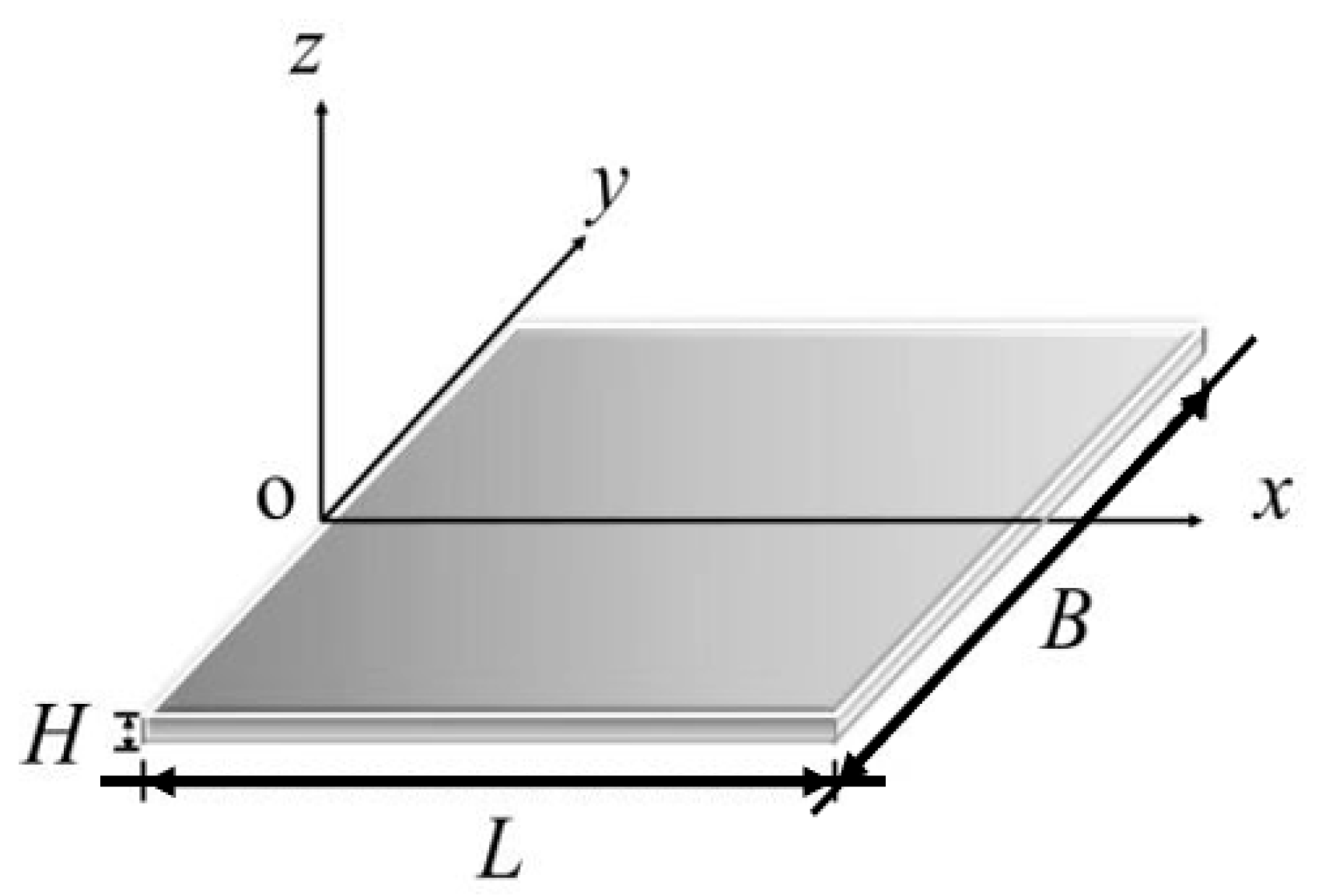
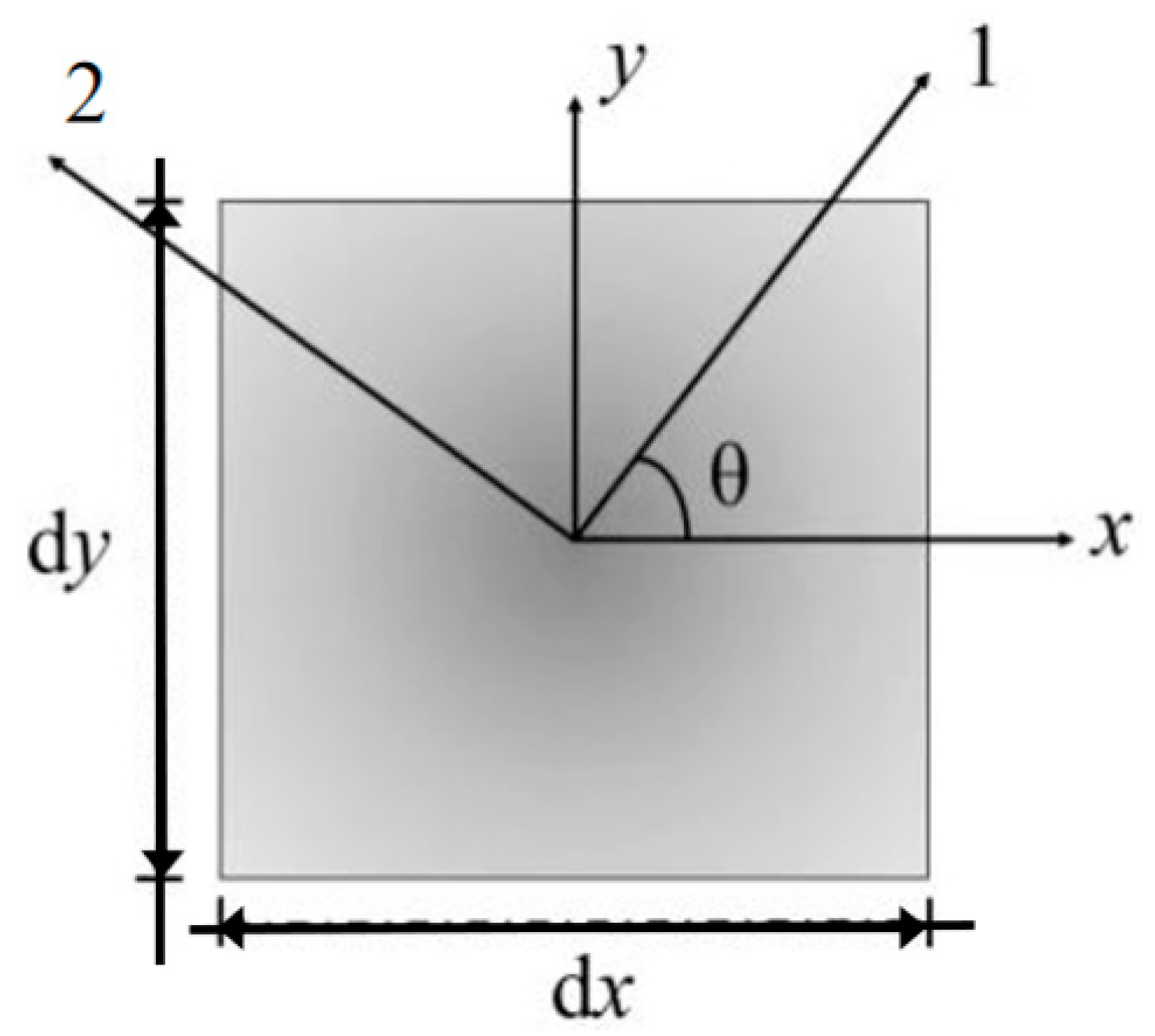
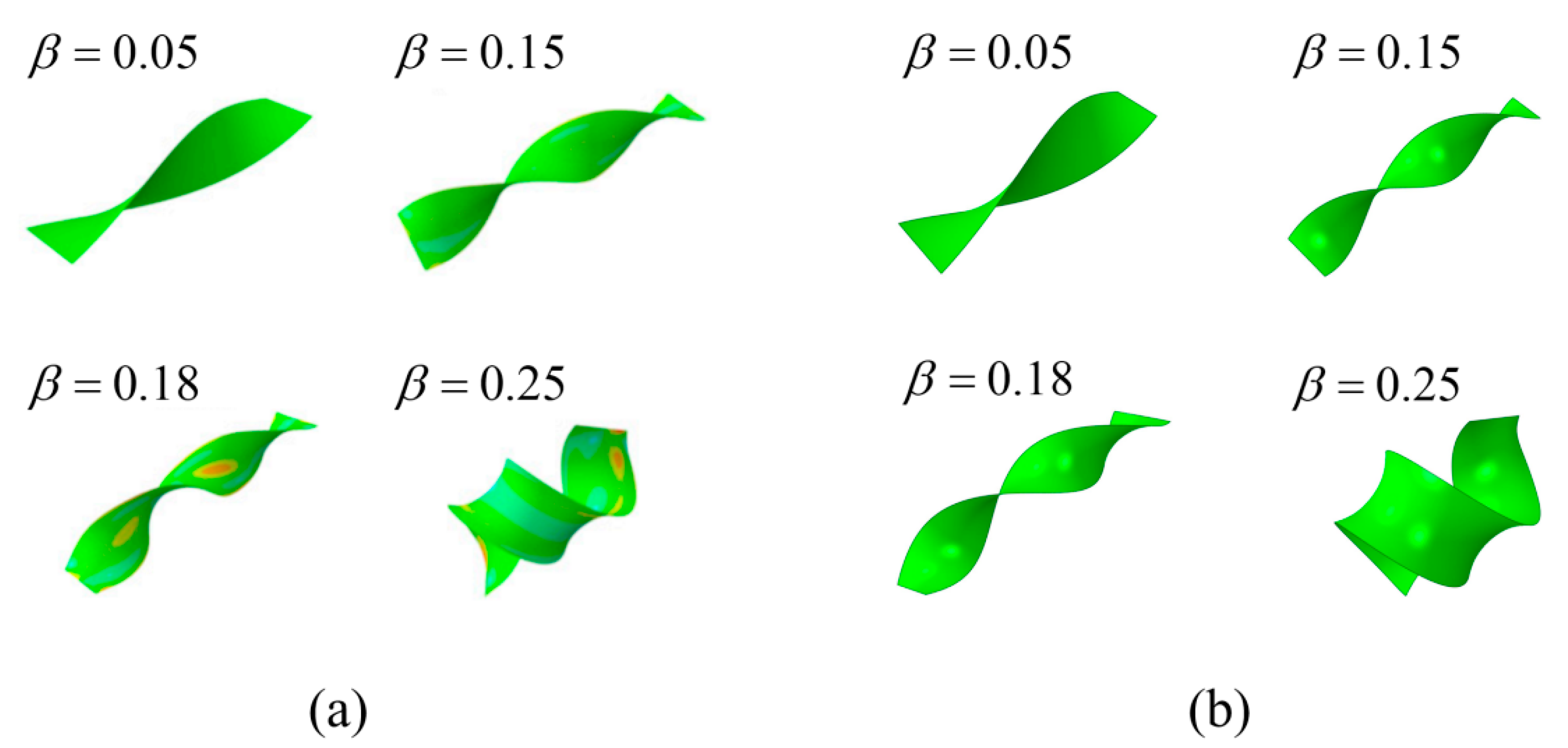
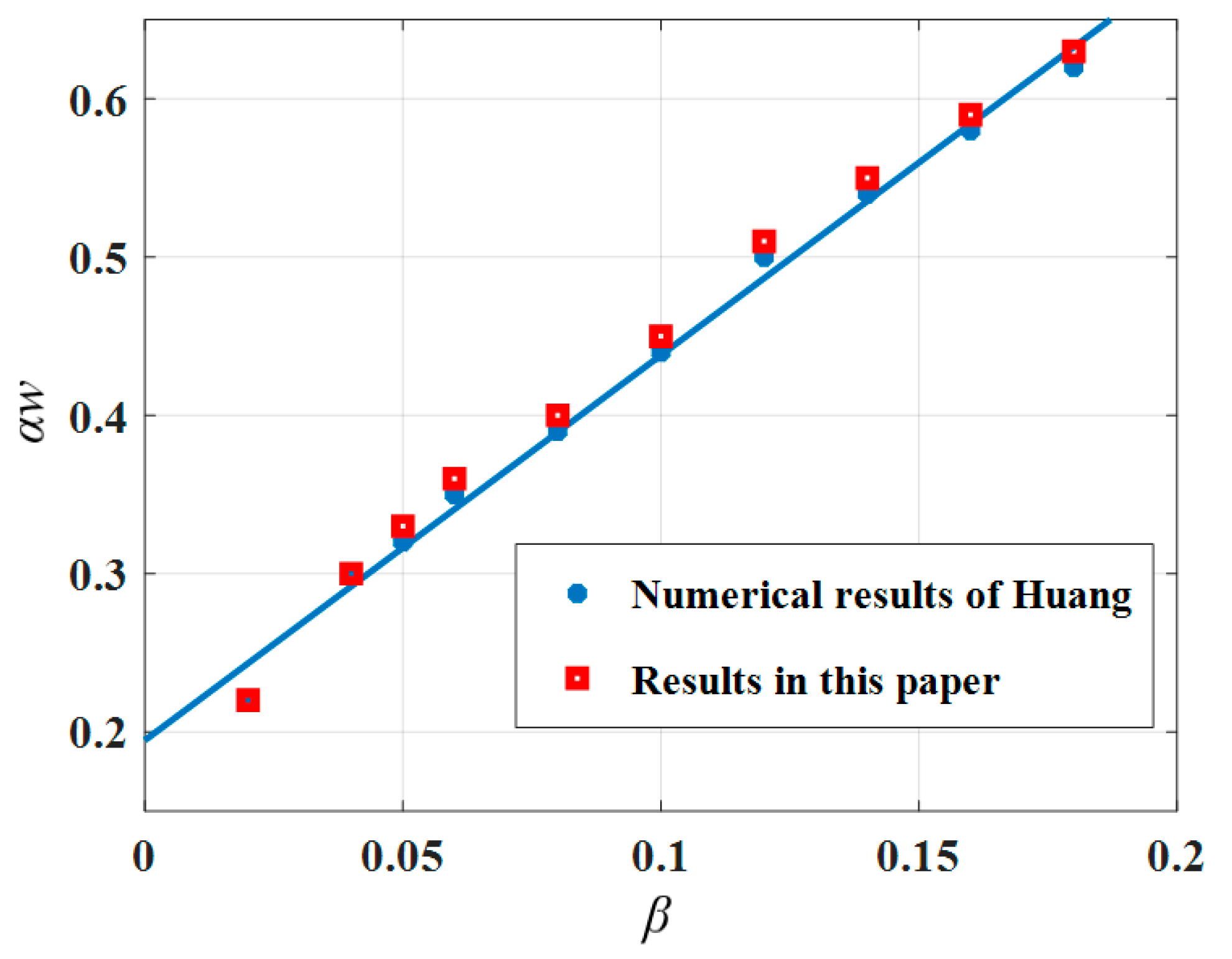


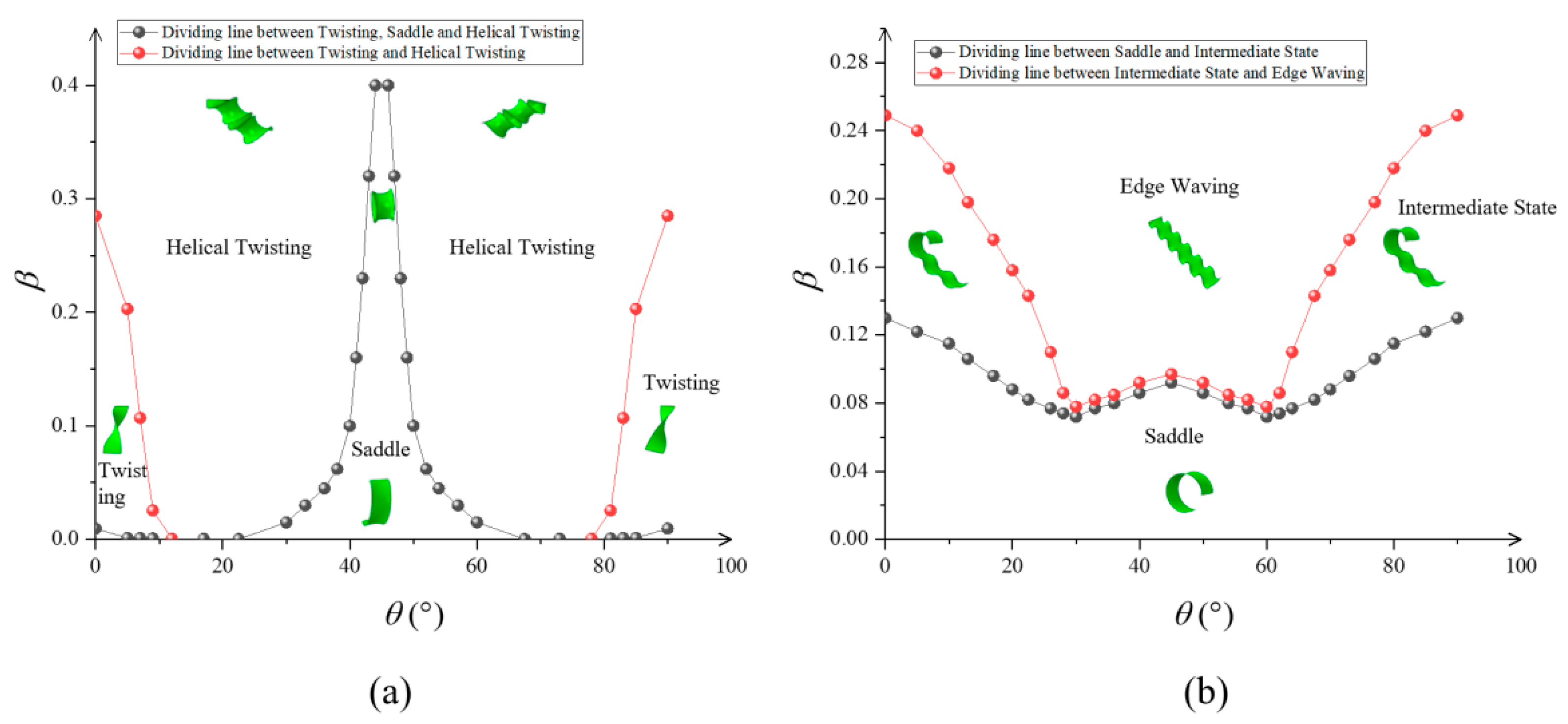
Publisher’s Note: MDPI stays neutral with regard to jurisdictional claims in published maps and institutional affiliations. |
© 2022 by the authors. Licensee MDPI, Basel, Switzerland. This article is an open access article distributed under the terms and conditions of the Creative Commons Attribution (CC BY) license (https://creativecommons.org/licenses/by/4.0/).
Share and Cite
Wu, D.; He, L. Study on the Mechanism of Elastic Instability Caused by Natural Growth in Orthotropic Material. Materials 2022, 15, 7059. https://doi.org/10.3390/ma15207059
Wu D, He L. Study on the Mechanism of Elastic Instability Caused by Natural Growth in Orthotropic Material. Materials. 2022; 15(20):7059. https://doi.org/10.3390/ma15207059
Chicago/Turabian StyleWu, Diquan, and Liwen He. 2022. "Study on the Mechanism of Elastic Instability Caused by Natural Growth in Orthotropic Material" Materials 15, no. 20: 7059. https://doi.org/10.3390/ma15207059




